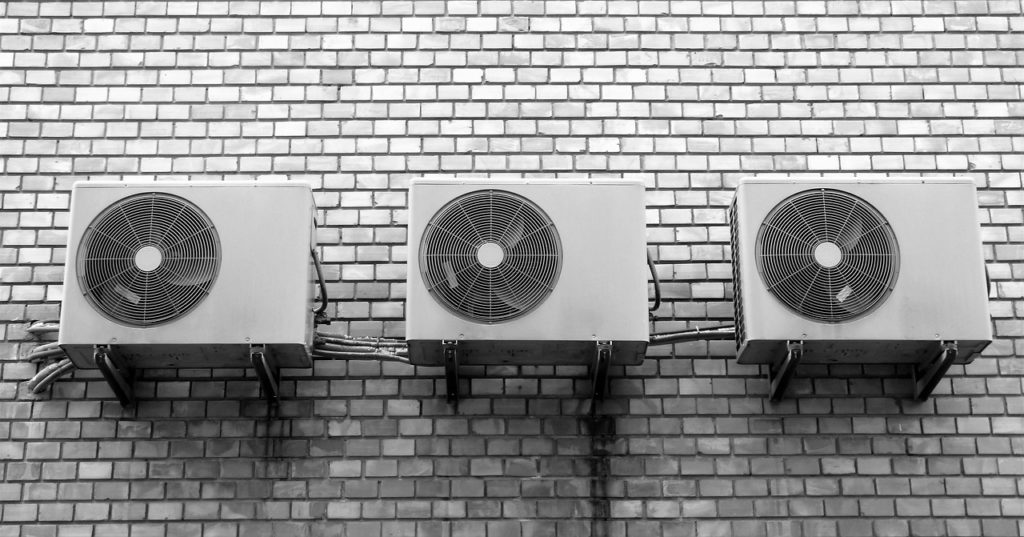In recent years, equipment for the regulation and maintenance of indoor climatic conditions has been in particular demand. Modern air conditioners allow you not only to save yourself from the heat in summer and heat in winter, but also to ventilate, remove excess moisture, clean the air from dust and microbes. The editorial staff of the site "bestx.htgetrid.com/en/" offers you an overview of the best air conditioners for apartments and offices.
Content
- 1 What kind of air conditioners are there?
- 2 How to choose an air conditioner - the main criteria
- 3 Tips for Correct Air Conditioner Installation
- 4 Advantages and disadvantages
- 5 Rating of quality air conditioners in 2020
- 5.1 Roda RS-A-07-E / RU-A-07-E
- 5.2 Toshiba RAS-09-U2-KH-2S-EE / RAS-09-U2-AH-2S-EE
- 5.3 Panasonic CS / CU-BE35TKE
- 5.4 Zanussi ZACM-07 MP-III / N1
- 5.5 Mitsubishi Electric MSZ-HJ-25-VA-ER1 × 2 / MXZ-2H-J40-VA-ER1
- 5.6 Panasonic S-F24-DD-2E5 / U-YL24-HB-E5
- 5.7 Shivaki SCH-484-BE / SUH-484-BE
- 5.8 LG S09SWC
- 5.9 Electrolux EA-CS-07-HP / N3
- 5.10 Daikin FT-XB-20C / RXB-20C
- 6 Choosing a manufacturer - which company is better?
What kind of air conditioners are there?
- Window
Inexpensive models with the simplest design, where all components are assembled into a single unit. They are installed in the part of the window intended for ventilation or cut into the external wall. They are unpopular due to the strong noise during operation, as well as the impossibility of installing this technique in modern plastic windows.
- Split systems
The most popular air conditioners, consisting of outdoor and indoor units, which can be located at a distance of up to 20 meters from each other. The external one is mounted on the wall from the street at any height and in a place convenient for this, and the internal one - indoors. The benefits include versatility, small footprint, quiet operation and a variety of options available. The most optimal option for an apartment.
- Mobile
The best climatic devices for home and summer cottages. They are equipped with wheels and do not need to be installed, as they are stand-alone units that are easy to carry from place to place. The disadvantages of these monoblocks include low performance, bulkiness, loudness of work and the need to be located near the window opening. For mobile models, a hole in the window is required where a hose is inserted to remove warm air and reduce the temperature inside the room.
- Multi-split
They differ from the split-system in the number of indoor units - up to 5 pieces with one outdoor unit. The popularity of these models is due to the ability to install an air conditioner without damaging the external architecture of the building. Multi-split systems are chosen for offices and apartments when it is necessary to condition several rooms at once.
- Duct
Installed behind a false ceiling, which completely hides the indoor unit. Only the air intake grids remain in sight. The cooled air is distributed through built-in ducts, which are also installed in the space between the ceiling. Convenient for small cottages, multi-room apartments and offices with suspended ceilings. The disadvantage is that it is difficult to adjust a separate temperature for each room.
- Cassette
Just like ducted ones, they are suitable for high suspended ceilings, but air is supplied through the lower compartment of the unit, which is mounted in the ceiling and covered with decorative tiles.Cassette air conditioners evenly distribute flows in all directions and are able to fit into any interior, but should be installed during the construction or renovation phase.
- Floor-sub-ceiling
Compact models. An indoor unit up to 25 cm is installed either on the ceiling and the air is directed along or at the bottom of the wall and the air rises up. This type of air conditioner is appropriate if wall mounting is not possible, for example, if the partitions are too thin.
- Column
They do not need assembly and disassembly, and therefore are usually installed in hotels, restaurants, shops and in factories. The main feature is a strong upward air flow, which sets the required temperature very quickly.
- VRF and VRV systems
Multi-zone units (several indoor units are connected to one outdoor unit), designed to cool large-scale rooms with a large number of people and various equipment that emit heat. They allow you to maintain comfortable conditions in zones with different microclimate.
- Precision
They are used in technological rooms where it is important to maintain an accurate temperature - in storage facilities, laboratories, server rooms, etc. They can withstand maximum loads even in summer heat and are able to work without interruption.
How to choose an air conditioner - the main criteria
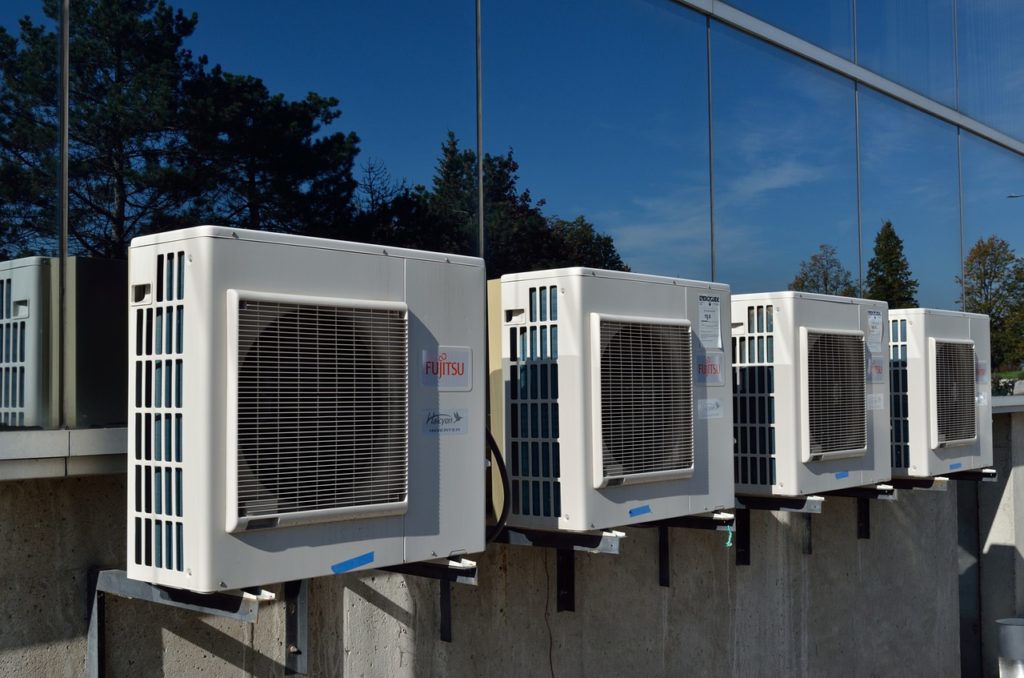
The main parameter is the area of the room. Climatic devices, depending on the area and field of application, are divided into household air conditioners, semi-industrial devices and industrial equipment.
Household with a power not exceeding 8 kW, which include window and mobile models, as well as split systems, are installed in rooms with an area of up to 100 m2... As a rule, these are apartments, offices, private houses, shops.
Devices of the semi-industrial category (from 10 to 15 kW) are designed for an area of 300 m2 - large cottages, duplex apartments, trading floors, multi-storey offices and more. This class includes cassette, column, channel, floor and ceiling devices. The industrial series with multi-zone and precision equipment with a power of up to 25 kW is intended for large-scale sports and entertainment complexes, administrative and industrial buildings with an area of more than 400 m2.
The power of the appliance is also important. The main mistake when choosing an air conditioner is the incorrect calculation of the required power for the declared area of the room, since these are two interrelated factors. When choosing a device for cooling, the power is calculated by dividing the quadrature by 10. You should also take into account the height of the ceiling - if it is more than 2.5 m, then 10% should be added to the first indicator.
When calculating the power required for heating, different rules apply - for every 10 m2 1 kW is required. These parameters are reference and averaged for an apartment or residential premises in a house. With an incorrectly selected capacity, the equipment will either not cope with cooling / heating, or will consume too much electricity, which is unprofitable from an economic point of view.
Secondary selection criteria
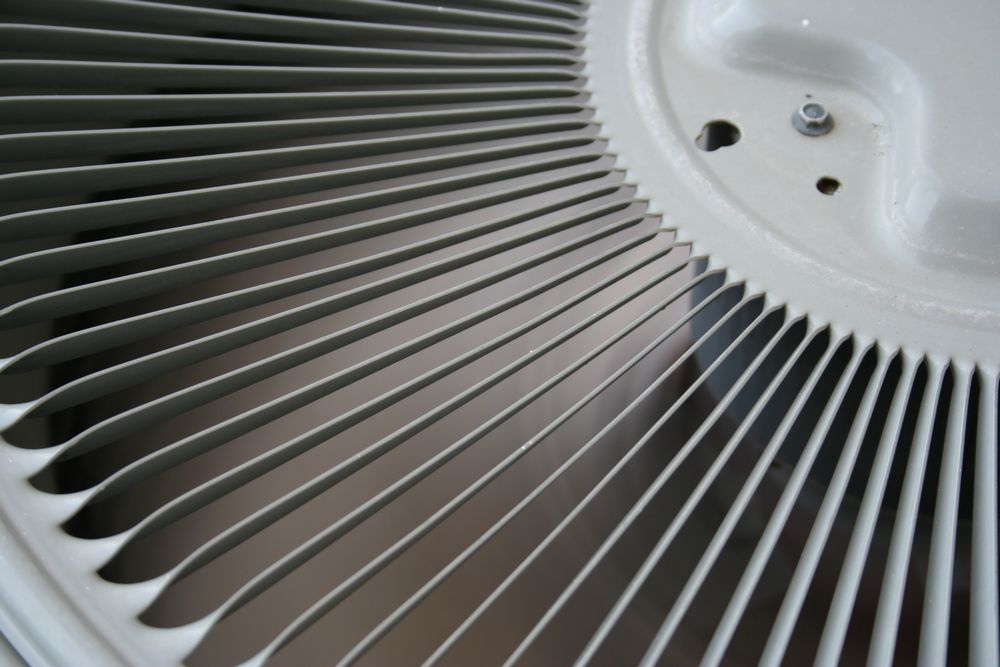
The air conditioning system of equipment, as a rule, is aimed not only at cooling, but also at heating. However, heating the air requires 3-4 times more power than cooling, which is not provided in all models. In addition, heating will be effective only in autumn and spring when the mark on the thermometer is not lower than -50FROM.
Energy consumption - appliances powered by power supply are labeled according to their energy consumption class in Latin letters from "A +++" to "G", where A-class is the most economical and G-class is the least efficient. In order for the device to consume a minimum of electricity, you should choose A-class equipment, which is also less noisy during operation.
Compressor - In standard air conditioners, the compressor runs periodically, turning on and off. In inverter-type equipment, the compressor is constantly in operation, smoothly adjusting the intensity of cooling or heating to changes in the environment.Thanks to the inverter compressor, the required air temperature is achieved extremely accurately, the device produces less noise, is more durable and consumes 30% less electricity.
Additional options and parameters
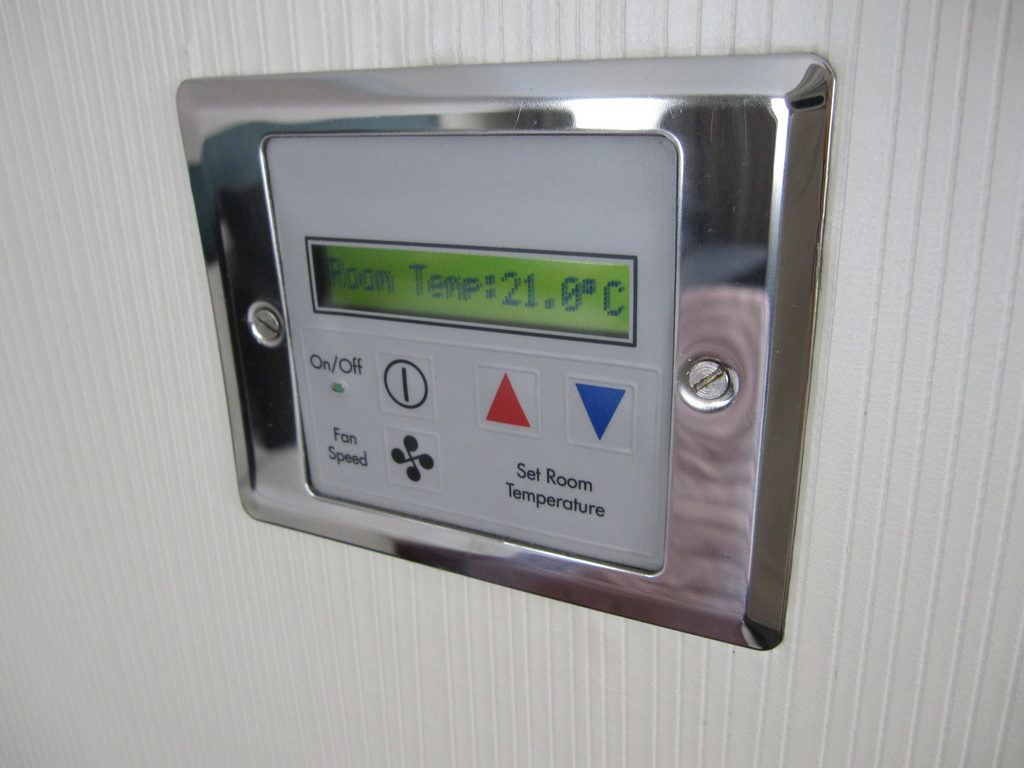
Display - the presence of a screen on which text and graphic information is displayed allows you to familiarize yourself with the operating parameters of the equipment, select a mode, set humidity, set a timer, and more.
The limiting volume is a parameter that indicates how much air is able to pass and cool the device in one minute. Measured in cubic meters.
Noise level - the minimum and maximum noise level must be specified in the product description. As a rule, most modern air conditioners are equipped with several speeds at which the fan is capable of operating. The minimum noise level is equal to the lowest speed of rotation of the blades. For a house and apartment, the noise level should not exceed 30 dB. For a bedroom - no more than 20 dB, which is a typical indicator for air conditioners in the middle price category.
Refrigerant - the type of substance on which the device operates. As a rule, this is freon, which can have a different composition, according to which the device is labeled. R410A is the best choice - this compound is environmentally friendly, non-toxic, non-flammable and more economical.
Maintaining t0 in automatic mode - a function due to which stable conditions are maintained in the room. When the temperature rises, the equipment turns on in cooling mode, and when it falls, it turns on heating. It is also possible to change the rotation speed of the fan blades and the direction of the air flow.
Ventilation and dehumidification mode - in the first case, the air is not affected, but simply passed through the fan and circulates the flows in the room. When dehumidifying, the equipment removes excess moisture, maintaining optimal living conditions, and prevents the growth of fungi and microbes.
What to look for?
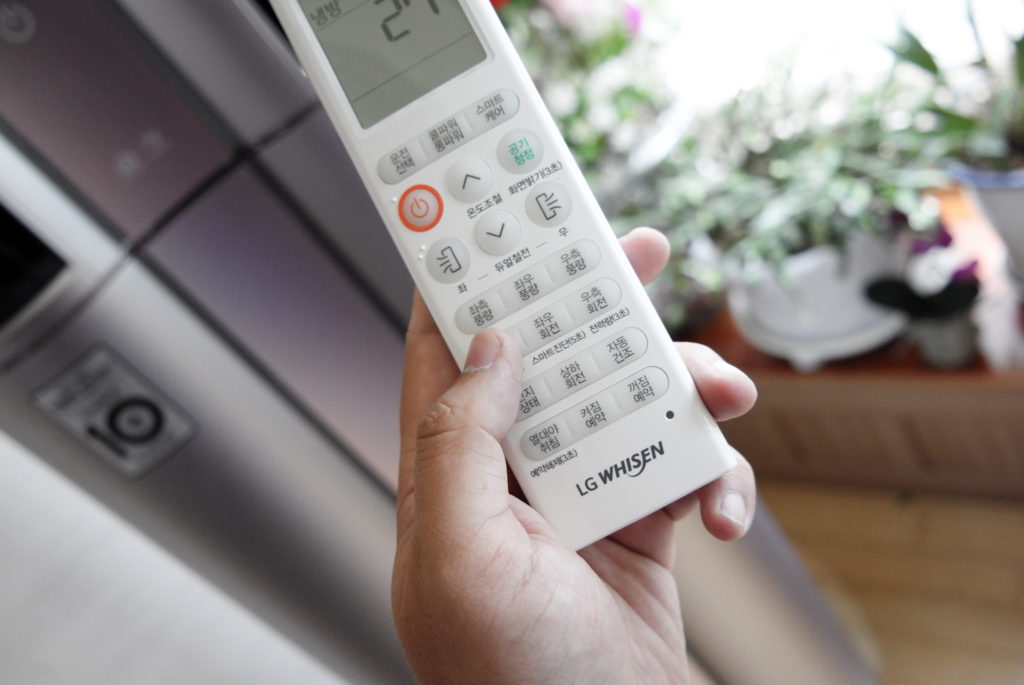
Before deciding which air conditioner is better to buy? it is necessary to decide what functions will be required in the future for the convenience of operating the equipment. These include:
- Connection to Wi-Fi - control equipment remotely using a smartphone;
- Automatic restart - restores previous settings after a malfunction, for example, a power outage;
- Anion generator - produces negatively charged ions that act on bacteria;
- Motion sensor - allows you to reduce energy consumption, as well as avoid hypothermia or overheating, since this mechanism, built into the device, monitors when active activity stops in the room (for example, at night) and switches the air conditioner to economy mode;
- Filters - there are deodorant (biofilters) and plasma. The task of both those and others comes down to cleaning the air from unpleasant odors, but plasma filters are more durable and effective;
- Night mode is a function due to which the minimum speed of rotation of the blades and smooth (in the range of 2-30C per hour) decrease / increase in temperature, which provides a comfortable sleep and silent operation of the device;
- Control panel - makes it possible to change the operating settings of the equipment remotely;
- Air flow regulation - guides that change the side of the air supply, for example, to the left or to the right;
- Control system for external conditions - the functionality of the device prevents the formation of ice on the external block when the temperature outside the window drops, which protects against breakdowns and contributes to the durability of the structure;
- Timer - provides automatic switching on or off equipment after a specified period of time;
- Draft protection - excludes the supply of cold streams during space heating.
Tips for Correct Air Conditioner Installation
The coldest air will be 2-3 meters from the equipment, so you should not place a bed, armchairs and sofas in this area.
If possible, it is necessary to remove the device as much as possible from household appliances that tend to heat up.
Install the air conditioner so that the air currents are not directed towards the furniture.
Before installation, the location of the windows should be taken into account - with the sunny side, the flow of cooled air should be directed at right angles to the heat from the windows, which will contribute to an even distribution of temperatures.
According to reviews, it is not recommended to install the unit opposite the entrance to the room, otherwise the cooled air will tend to the adjacent room.
When installing under a ceiling, an indent should be made - at least 15 cm, which will ensure free circulation of flows.
To install an air conditioner in the bedroom, the area above the bed will be the best place, so the coldest air will be outside the sleeping place.
When installing climatic equipment in the kitchen, it is important not only to remove the device from the stove as much as possible, but also to provide for the fact that the air flow will contribute to the spread of odors throughout the apartment.
The connecting elements must be hidden under decorative boxes or "recessed" into the wall, which is a guarantee of the safety of the system itself.
Features of the maintenance and operation of equipment
Before buying an air conditioner, it is important to decide in advance where the structure will be installed. The installation has its own nuances depending on the model, and it is very difficult to move the device in the future if the installation is done incorrectly, which threatens drafts and colds. The quality of installation will also invariably affect the operation of the equipment. In this regard, in the absence of the necessary professional knowledge and skills, you should not take risks and install the air conditioner yourself, but pay for the work of trusted specialists.
Maintenance of equipment comes down to a whole range of works, the task of which is to maintain the operating condition of the device and prevent breakdowns in a timely manner. The user of the equipment is able to perform a certain amount of work independently. For example, if a split system was chosen, then once a month it is necessary to take care of it - clean the housing of the blocks, clean the filter elements, replace with new ones if necessary, check the integrity of the power line and insulation resistance, monitor the grounding parameters. If you ignore the cleaning process, then over time a dense deposit will form, which will impede air circulation and contribute to overheating of the device. All other events are held once a year by narrowly focused specialists.
The cost of service and maintenance work, the timeliness of which allows time to eliminate system failures, fluctuate depending on the company and the set of works. But prevention, as a rule, is much cheaper than full repairs. It should also be remembered that it is periodically necessary to refuel freon, which should be carried out according to the maintenance plan, but sometimes a refrigerant leak occurs, invariably affecting the operation of the device.
Advantages and disadvantages
Advantages:
- Since most modern air conditioners are equipped with double systems, they contribute to heating the premises in winter and cooling in summer;
- Thanks to additional functions, the device is able to purify the air from unpleasant odors, pollution and microbes;
- For allergy sufferers, there is a special filter that cleans the air in rooms from allergens - animal hair, dust, etc .;
- The ventilation mode provides uniform air exchange throughout the space;
- Dehumidification function removes excess moisture, preventing the development of pathogenic bacteria and fungi;
- The device is able to alleviate the condition of people prone to allergies and respiratory diseases.
Disadvantages:
- In some cases, air conditioners may be contraindicated for health reasons;
- In addition to the purchase costs, you will need to pay for installation, service, replacement of components;
- Some models consume significant amounts of electricity, which will significantly increase utility bills;
- Standard equipment will not cope with air heating with external temperature indicators below -50FROM;
- If the operating rules are not followed, the air conditioner can lead to colds;
- If the filters are not replaced in time, there is a risk of emissions of harmful substances into the air;
- Some models are noisy enough to be uncomfortable, especially at night.
Main technical characteristics
| room | Specifications | Recommendations |
|---|---|---|
| 1 | Manufacturer | There are three segments: economy, middle class and premium. Low-cost air conditioners are manufactured by companies whose facilities are located in China - Shivaki, Dantex, Hyundai, Leberg, NEOCLIMA. The middle class includes Japanese brands Toshiba, Electrolux and Panasonic. The best manufacturers of luxury equipment include Mitsubishi and Daikin, which, according to buyers, produce the highest quality and most reliable climate systems. |
| 2 | Material | Freon is used as a refrigerant. The body is made of metal and shock-resistant plastic, which is resistant to moisture and temperature extremes. |
| 3 | Design | Monoblocks represent a single structure, inside which there is a compressor and an electronic base. Monoblocks are window, wall, mobile. Split systems are paired units installed at a certain distance from each other. In multi-zone and multi-split systems, several indoor units operate from one external one, the only difference is that in the first case, all units are connected to a common communications route. And in the second, a separate line is laid between the external and each of the internal blocks. |
| 4 | Components | Remote control, spare cleaning filters included as standard. |
| 5 | Design | Most air conditioners are rectangular appliances in white or silver color. For an apartment and office, an elongated model with smooth lines is considered the most acceptable. But there are also constructions of original design and color scheme. |
| 6 | Price | Air conditioners differ in price depending on the model and purpose - the higher the area that the equipment can serve, the higher the price tag. The average price of a split-system for an apartment and a small office is 15,000 rubles. The cost of a multi-zone unit ranges from 30,000 to 180,000 rubles, depending on the brand and capacity. |
Rating of quality air conditioners in 2020
Roda RS-A-07-E / RU-A-07-E
- Brand country: China;
- Type: split;
- Working systems and power: cold (2.1 kW) and heat (2.2 kW);
- Voltage: 220W;
- Energy consumption: A-class;
- Price - 14,000 rubles.

Wall-mounted construction with a maximum length of communications up to 15 meters. Designed for an area up to 20 m2... Cooling range: +21 to +430C, heating: from -7 to +430C. The noise level of the indoor unit is 33 dB, that of the outdoor unit is 52 dB.
Advantages:
- with self-diagnosis function;
- with remote control;
- there are settings for a comfortable sleep;
- there is a motion sensor;
- automatic temperature maintenance;
- dehumidification mode;
- 4 modes of fan speed;
- with the possibility of directing air flows;
- with anti-ice system;
- there is protection against drafts;
- with the function of restoring settings.
Disadvantages:
- not an inverter;
- no supply ventilation;
- there is no fine air filter.
Toshiba RAS-09-U2-KH-2S-EE / RAS-09-U2-AH-2S-EE
- Brand country: Japan;
- Type: split;
- Working systems and power: heat (2.8 kW) and cold (2.6 kW);
- Voltage: 220W;
- Energy consumption: A-class;
- Price - 22,000 rubles.
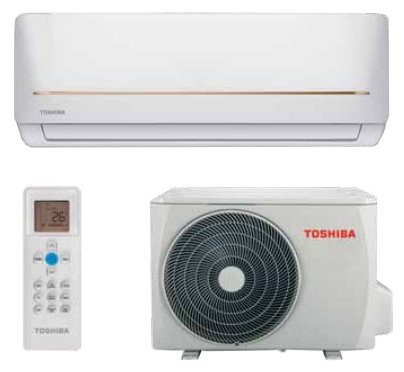
Wall model for an area of 25 m22... The maximum length of communications is 20 meters. The noise level of the indoor unit is 26 dB, the external one is 40 dB. Cooling t range: +18 to +440C, when heated: from -7 to +250FROM.
Advantages:
- with the ability to adjust the humidity level;
- automatic maintenance t;
- self-diagnosis;
- with comfortable sleep function;
- complete with remote control with multifunctional display;
- there is a timer;
- with filtration from dust and odors;
- with a change in the position of the dampers;
- function of restoring working settings.
Disadvantages:
- there is no supply ventilation;
- not an inverter compressor.
Panasonic CS / CU-BE35TKE
- Brand country: Japan;
- Type: split;
- Working systems and power: cold (3.4 kW) and heat (3.8 kW);
- Voltage: 220W;
- Energy consumption: A +;
- Price - 37,000 rubles.

Wall-mounted construction with a maximum length of the communication line up to 15 meters. Able to serve an area up to 35 m2... The noise level of an external installation is 50 dB, an internal one - 38 dB.
Advantages:
- with inverter;
- with automatic maintenance of the t level;
- with self-diagnosis function;
- there are settings for a comfortable sleep;
- with dehumidification mode (up to 2 liters per hour);
- with remote control;
- there is a timer;
- 3 modes of blade rotation speed;
- air flow direction regulator;
- anti-ice system;
- restart function;
- Wi-Fi control;
- warm start.
Disadvantages:
- no supply ventilation;
- no air filter;
- high price.
Zanussi ZACM-07 MP-III / N1
- Brand country: Italy;
- Type: mobile;
- Working systems and power: cooling (2.0 kW);
- Voltage: 220W;
- Energy consumption: A-class;
- Price - 17,000 rubles.
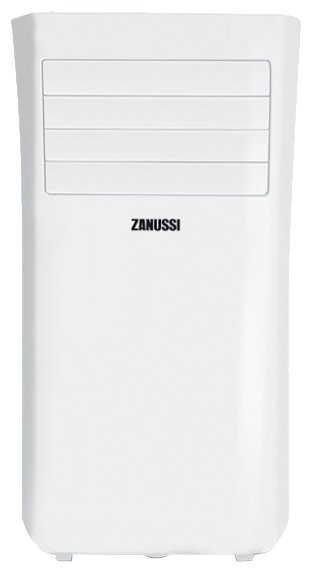
Vertical monoblock designed for an area of 20 m2, weighing 20 kg. Equipment dimensions: width 35, 4 cm; height - 69.8 cm; depth - 34 cm. The noise level is 52 dB.
Advantages:
- with automatic maintenance t;
- self-diagnosis of malfunctions is available;
- there are functions of comfortable sleep;
- with the function of removing moisture;
- remote control control;
- timer on / off;
- there is a motion sensor;
- automatic restart function;
- with the possibility of self-cleaning;
- comfortable wheels for movement;
- Includes washable air filter and warm air outlet;
- compact.
Disadvantages:
- there is no supply ventilation mode;
- not an inverter;
- no heating mode.
Mitsubishi Electric MSZ-HJ-25-VA-ER1 × 2 / MXZ-2H-J40-VA-ER1
- Brand country: Japan;
- Type: multi-split;
- Working systems and power: heat (4.3 kW) and cold (4.0 kW);
- Voltage: 220W;
- Energy consumption: A-class;
- Price - 90,000 rubles.

Wall-mounted air conditioner with two indoor units and a maximum communication length of up to 30 meters. The noise level of the indoor unit is 22 dB.
Advantages:
- with inverter;
- with ventilation;
- automatic maintenance of operating parameters;
- self-diagnosis;
- with settings for a comfortable sleep;
- with the function of removing moisture;
- control using the remote control;
- there is a timer;
- with deodorizing filters, enzymes and fine air purification;
- 4 fan speeds;
- flap control;
- with the prevention of ice formation;
- automatic restart;
- almost silent;
- suitable for allergy sufferers.
Disadvantages:
- high price.
Panasonic S-F24-DD-2E5 / U-YL24-HB-E5
- Brand country: Japan;
- Type: channel;
- Working systems and power: cooling (5.6 kW) and heating (7 kW);
- Voltage: 220W;
- Energy consumption: no information available;
- Price - 110,000 rubles.
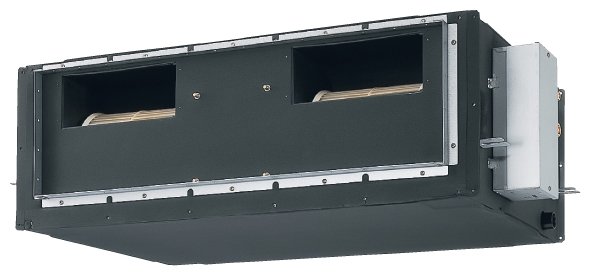
A multi-zone model of a semi-industrial category with a communications length of up to 30 meters. The maximum noise level is 45 dB. Designed for room area up to 56 m2.
Advantages:
- with inverter;
- automatic temperature maintenance;
- self-diagnosis function;
- moisture removal;
- with remote control;
- timer on and off;
- with adjustable speed of rotation of the fan blades;
- deodorizing filter;
- with the prevention of ice formation;
- memorization of settings and automatic restart;
- protection against drafts.
Disadvantages:
- noisy;
- high price.
Shivaki SCH-484-BE / SUH-484-BE
- Brand country: Japan;
- Type: cassette;
- Working systems and power: heat (15.4 kW) and cold (14 kW);
- Voltage: 220W;
- Energy consumption: A-class;
- Price - 105,000 rubles.
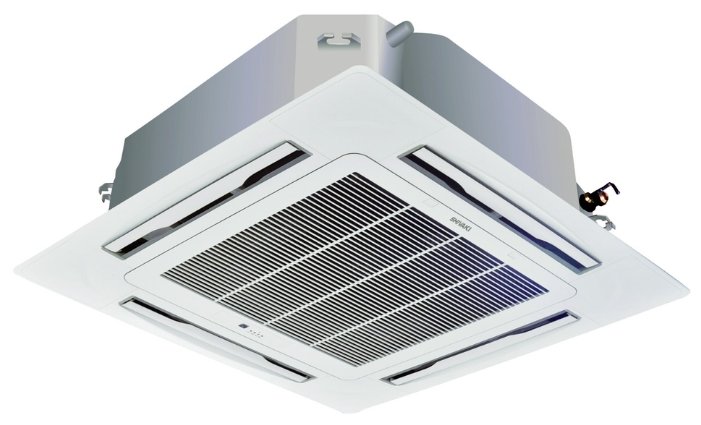
A semi-industrial device designed for installation in private houses, multi-storey offices, multi-room apartments.
Advantages:
- there is ventilation;
- with automatic maintenance of settings;
- self-diagnosis of malfunctions;
- dehumidification mode (up to 5 liters per hour);
- with remote control function;
- with a choice of fan speed;
- with air flow control;
- with the prevention of ice formation;
- with automatic restart function;
- able to function with external t - 70FROM.
Disadvantages:
- high price.
LG S09SWC
- Brand country: South Korea;
- Type: split;
- Working systems and power: heat (2.6 kW) and cold (2.5 kW);
- Voltage: 220W;
- Energy consumption: A-class;
- Price - 32,000 rubles.
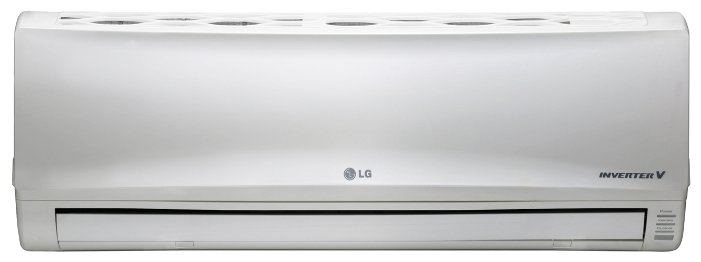
Wall-mounted device with permissible communication length up to 15 meters. Able to count on an area of up to 25 m2... The noise level of the indoor unit is from 19 to 39 dB.
Advantages:
- inverter;
- with the possibility of ventilation;
- with constant maintenance of t;
- with self-diagnosis function;
- there is a comfortable sleep function;
- moisture removal function (up to 0.83 liters per hour);
- with control panel;
- there is an on and off timer;
- 4 fan speeds;
- deodorizing filter;
- there is an ion generator;
- auto-cleaning;
- air flow control;
- with the prevention of ice formation;
- automatic restart;
- protection against drafts.
Disadvantages:
- at maximum power, the external unit makes a noticeable noise.
Electrolux EA-CS-07-HP / N3
- Brand country: Sweden;
- Type: split;
- Working systems and power: heat (2.2 kW) and cold (2.1 kW);
- Voltage: 220W;
- Energy consumption: A-class;
- Price - 18,000 rubles.
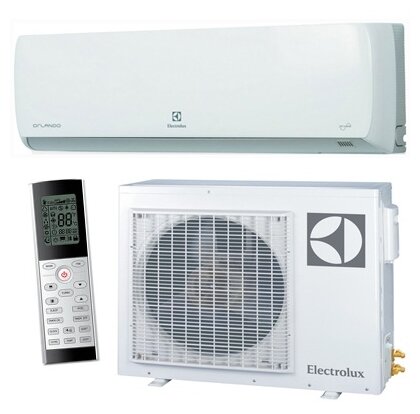
Wall structure up to 20 m22 and communications length up to 15 meters. Cooling t range: +18 to +430C, when heated: from -7 to +240C. The minimum noise performance of the indoor unit is up to 26 dB.
Advantages:
- there is ventilation;
- automatic maintenance t;
- self-diagnosis;
- there is a comfortable sleep function;
- moisture removal;
- there is an on and off timer;
- fine air filter;
- with adjustable speed of rotation of the fan blades;
- there is a multi-stage deodorizing filter;
- ion generator;
- with air flow control function;
- wide-angle shutters;
- with the prevention of ice formation;
- with automatic restart;
- with protection against drafts;
- able to work with external t -70FROM.
Disadvantages:
- not an inverter.
Daikin FT-XB-20C / RXB-20C
- Brand country: Japan;
- Type: split;
- Working systems and power: heat (2.5 kW) and cold (2.0 kW);
- Voltage: 220W;
- Energy consumption: A-class;
- Price - 43,000 rubles.
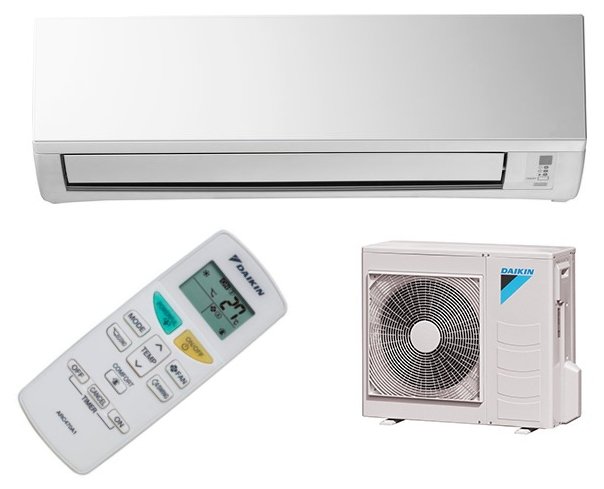
Wall-mounted model for servicing an area of 20 m2 and communications length up to 15 meters. The functionality of the equipment allows you to use it for heating air at an external temperature of up to -150C. The range of the noise level is from 19 to 39 dB.
Advantages:
- there is an inverter;
- with ventilation;
- self-diagnosis function;
- maintaining t;
- there is a comfortable sleep function;
- with the ability to remove moisture;
- control using the remote control;
- there is an on / off timer;
- 3 fan speeds;
- adjustable flap position;
- with the prevention of ice formation;
- automatic restart.
Disadvantages:
- makes noise when working on heating.
Choosing a manufacturer - which company is better?
A market survey showed that the most popular are split systems, which are optimal for installation in apartments and offices, as well as small private houses. To service large areas, buyers prefer semi-industrial equipment - cassette and duct multi-zone air conditioners, the main disadvantage of which is their high cost compared to household structures.
With regard to brands, buyers most often give preference to proven manufacturers who have long won their niche in this segment - Electrolux, Mitsubishi, Toshiba, Panasonic, Daikin, Hyundai, Samsung, LG, Shivaki.
Also, lesser known firms - GREEN, Ballu, Timberk (Russia), Kentatsu (Japan), General (USA) - enjoy a certain degree of trust.
If you have experience of using air conditioners described in the rating, or a more interesting model, tell us about it in the comments.

